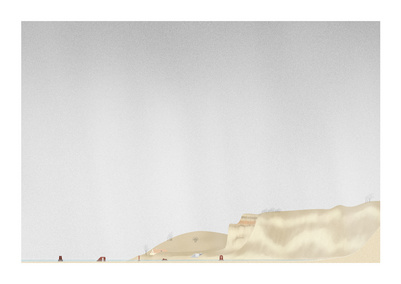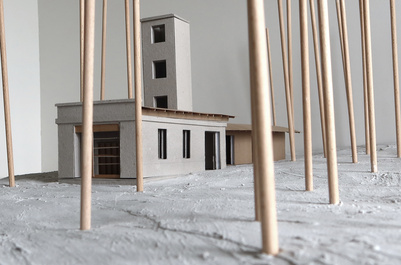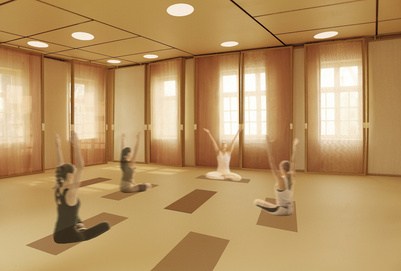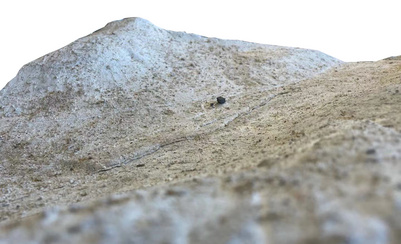Rave-Review unfolded at Blasieholmen
Placed between the worlds of art and fashion this project showcases contemporary Swedish design in the forgotten goods shed at Blasieholmen in Stockholm. This proposal interprets ‘unfolding’ as a design strategy, creating a functional space by remaking and up-cycling. Reviving the goods shed into a retail space and studio for sustainable fashion brand Rave-Review, re-defining the luxury retail experience.



Be sustainable but make it fashion
“Remake and unfold” interprets the contemporary sustainable fashion scene in the old goods shed at Blasieholmen in Stockholm, responding to the history of trading and the local surroundings of art and fashion. The design proposes a transformable space for displaying the maker’s space and their products.
The proposal gives space for several functions, such as retail, production, storage, and office. The retail space can be seen as transformable as the interior is moveable to allow for adjustments allowing events, fashion shows, special exhibitions or other such needs. In order to facilitate these transformations, the proposal takes a minimalistic approach, stripping the interior to only its necessary components.
The industrial atmosphere of the goods shed stands in contrast to the high-end fashion brand Rave-Review, however they are connected through both the shed’s timber construction and proposed spatial interventions.
The concepts ”remake” and ”unfold(s)” have inspired the spatial strategy, and at various points throughtout the project remaking and unfolding can be interpreted.

This proposal re-opens the façade to create two new entrances and two new display windows and allows the placements of the changing rooms create a backdrop for the display windows. Other openings allow for natural light to enter the goods shed.
Upon entering the retail space, one is met with garments displayed on bespoke steel hangers, fixed to the shed’s original wooden structure. These hangers can be disassembled and re-assembled to create new arrangements, making the retail space flexible depending on the occasion. The steel elements of the hangers are joined to eachother with a connection detail inspired by the Rave-Review aesthetic. It interprets the buckle of the brand’s signature tartan fabric.
The display fittings and furniture are made using this same design language. Metal structures act as shells to be dressed with garments.
Lastly, the sewing studio is fitted with Translucsent glass towards the retail space beyond, allowing visitors to gain a sense of the craft involved in production of the high end pieces as makers are silhouetted against the glass. Inside the studio, shelves are fitted with textiles, introducing a sense of colour and pattern, mimicking the items being produced and promoting a sense of craftsmanship.


























